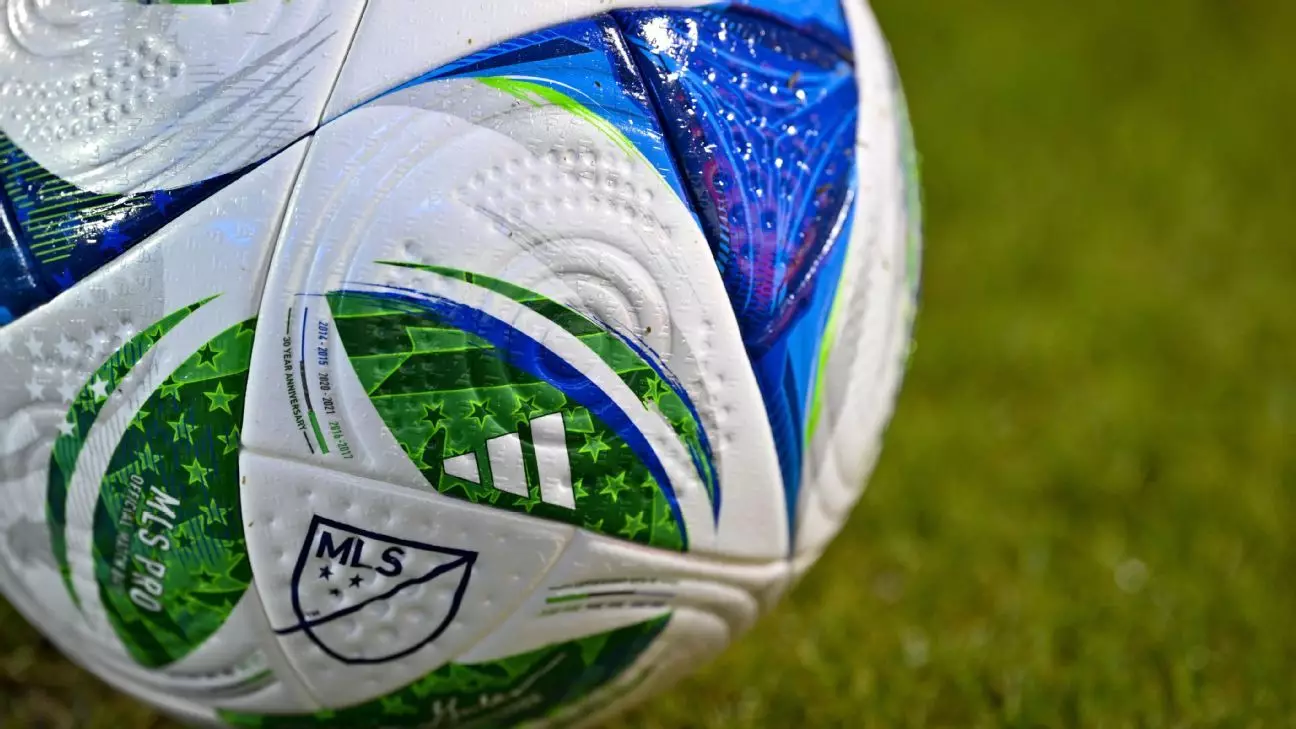Unpacking the MLS Player Compensation Controversy: A Call for Fairness
The world of sports is often a microcosm of larger societal dynamics, where the tension between players, leagues, and governing bodies can lead to significant disputes, especially around compensation. Right now, Major League Soccer (MLS) and its Players Association (MLSPA) are entrenched in a heated debate over how prize money from the upcoming FIFA Club World Cup should be divided. At the heart of this issue is a call for fair pay that truly reflects the players’ contributions to their teams’ successes—a concern that has been magnified by what some perceive as rigidity and disrespect from league officials.
Public awareness of this issue skyrocketed when players from Seattle Sounders FC took a stand on June 1, wearing shirts with slogans like “Club World Cash Grab” and “Fair Share Now.” This bold display caught the eye of fans and media, highlighting the mounting frustration among players about their pay and how they’re treated within the league. Such acts of player activism mark a significant shift in the sports arena, showing that athletes are no longer willing to accept terms they believe undervalue their contributions.

Key Takeaways
- MLS players are demanding more equitable compensation for their efforts.
- The MLSPA views the current proposal as insufficient compared to international standards.
- Collective player action may be a powerful tool for achieving fair compensation.
MLS’s Proposal: A Step Forward or Just a Band-Aid?
Under pressure, MLS put forward a revised compensation plan offering 20% of performance-related bonuses for tournament teams and an upfront participation fee of $1 million. While this might seem like progress towards better player compensation at first glance, the MLSPA was quick to dismiss it as falling short of international norms. The association argues that with FIFA’s expected earnings exceeding $28 million, players deserve a much larger share.
The proposed plan translates to only about 10% of FIFA’s payouts going to players, which many see as a mere token gesture rather than a comprehensive solution. The MLSPA believes that such an offer does not adequately address players’ concerns or acknowledge their critical role in generating these revenues. This ongoing dispute raises questions about whether MLS is genuinely committed to fair compensation or merely making superficial changes.

The Retaliation Narrative: Friction Between the League and Players
The MLSPA has described MLS’s negotiation tactics as “retaliatory,” claiming that the timing and nature of the proposals highlight an imbalance of power between the league and its players. The perception that MLS undervalues player efforts underscores a broader issue regarding how leagues prioritize profits over the welfare of athletes who drive success. Instead of fostering a cooperative relationship with its players, MLS seems to be nurturing discontent and dissatisfaction.
This friction is particularly concerning as an international tournament nears—a time when players should be focused on preparing for victory rather than being bogged down by disputes. These tensions could dampen player morale and even tarnish the league’s reputation as it seeks recognition on a global scale. Resolving these issues is crucial not only for maintaining harmony but also for ensuring that MLS can effectively showcase its talent on an international stage.
The Path Forward: Igniting Change Through Collective Action
Given these challenges, it’s clear that unity among players is crucial. Professional athletes must collectively express their needs—not only for better pay but also for recognition as integral parts of the league’s fabric. The possibility of engaging in protected actions under federal labor law, despite current restrictions on striking, could provide significant leverage in future negotiations.
The potential involvement of clubs like LAFC, Seattle Sounders, and Inter Miami CF in the Club World Cup presents an exceptional chance for players to harness their collective power to effect lasting change. It’s time for players to unite under a common cause, using their visibility on an international platform to demand equity. This collective momentum could set a precedent for how far leagues will go to honor and support their athletes.

Final Thoughts
As discussions around player compensation continue, the negotiations between MLS and MLSPA will serve as a critical measure of how dedicated sports leagues are to valuing and empowering their athletes. Without genuine reform, there’s a real risk that leagues will alienate those very individuals who fuel their success. It’s essential to consider whether current practices are sustainable—not just for MLS but for all sports organizations facing similar challenges. In this battle for fair compensation and treatment, unified action could indeed be the spark needed to drive meaningful change.
MLS Player Compensation
Sports Fairness
Player Activism
Collective Bargaining


Leave a Reply